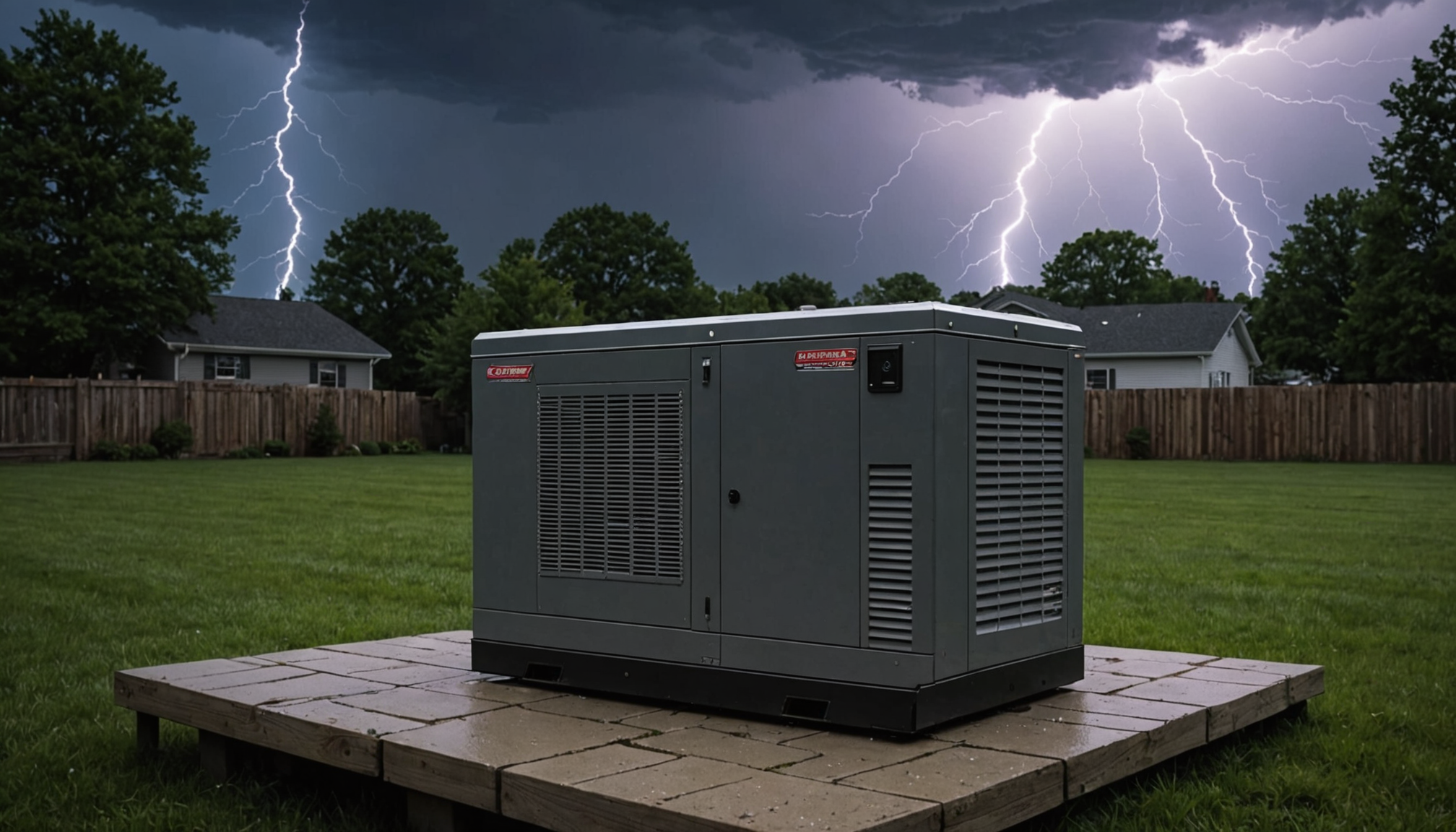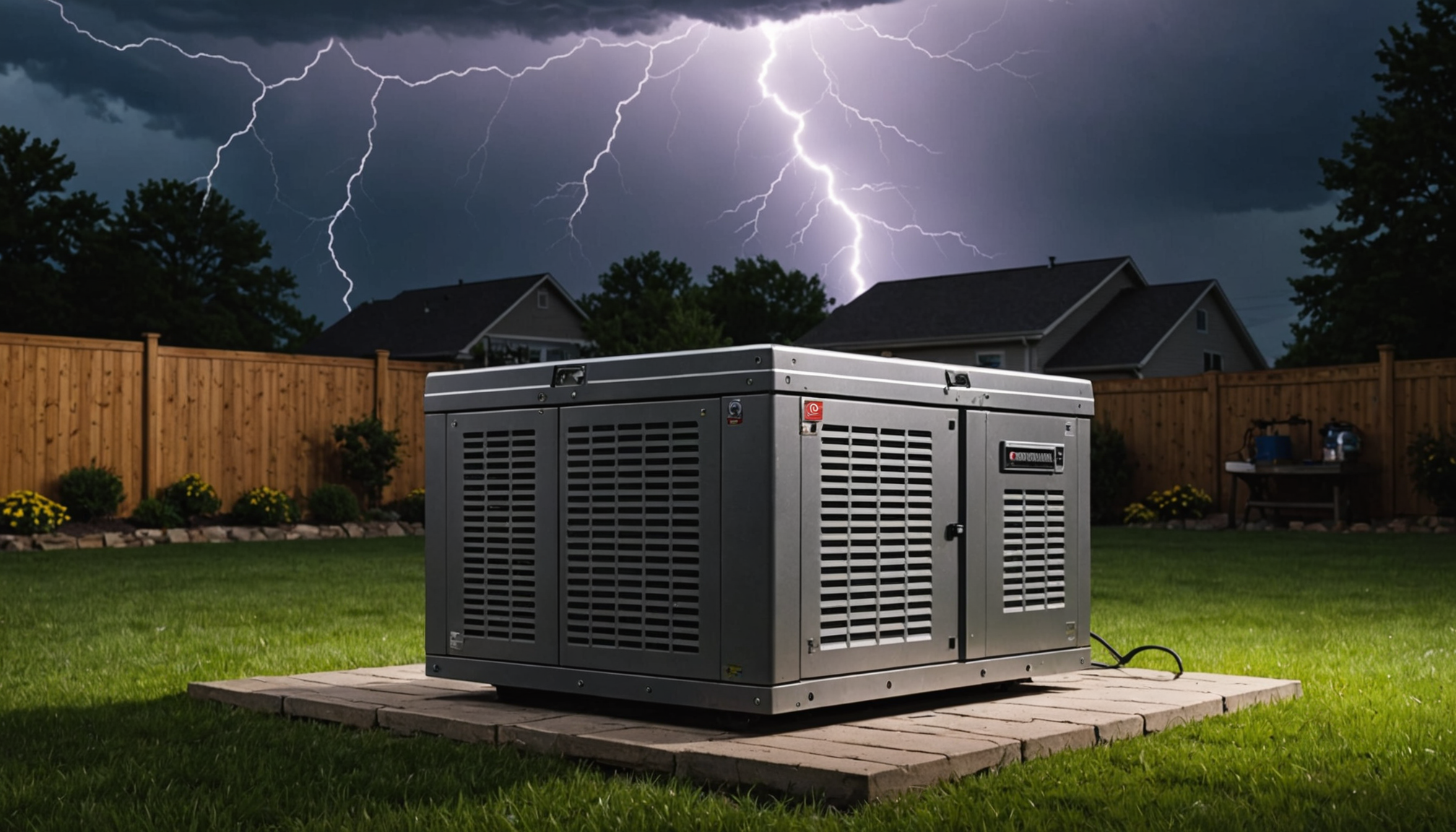When considering a generator for residential use in Missouri, understanding your power needs is paramount. The state is no stranger to severe weather conditions, with frequent thunderstorms, ice storms, and tornadoes that can lead to power outages. Determining your electrical requirements ensures that you select a generator that can effectively meet the demands of your home during these events, providing uninterrupted power to essential appliances and systems.
First, it’s crucial to assess which appliances and systems are most vital during an outage. Typically, homeowners prioritize refrigerators, heating or cooling systems, sump pumps, and lighting. According to the U.S. Energy Information Administration, the average Missouri household consumes about 11,000 kWh of electricity annually, with significant fluctuations during hotter and colder months when HVAC systems are heavily utilized. This information can help you estimate the wattage needed to sustain your household.
Calculate the total wattage by listing each appliance you intend to power, noting both the starting and running watts. For example, a refrigerator might require 700 starting watts and 200 running watts, while a central air conditioning unit could need upwards of 3,500 watts to start and 1,500 watts to run. Once you have a comprehensive list, you’ll better understand the size and capacity of the generator you require, whether it’s a whole-home system or a portable unit.
Additionally, Missouri’s diverse climate can influence your generator choice. A whole-home generator might be more suitable for homeowners with larger energy needs or in areas prone to longer outages. Portable generators, however, can be an economical and flexible solution for those with smaller or temporary power requirements. Reflecting on these factors plays a significant role in optimizing your investment and ensuring reliable backup power.
Installation and maintenance
When it comes to setting up a generator in Missouri, understanding the intricacies of installation and upkeep is crucial for both whole-home generators and portable units. Each type has distinct requirements, and proper installation and maintenance ensure longevity and efficiency, especially during power outages typical of Missouri’s unpredictable weather.
Whole-home generators, often larger and more complex, require professional installation. This involves connecting the generator to your home’s electrical system, usually through a transfer switch, which isolates the generator when grid power is available. This setup ensures seamless transition during outages, so that power is restored to your home without manual intervention. The installation process for a whole-home generator is a one-time, comprehensive task often requiring permits and compliance with local building codes. Hiring a licensed electrician with experience in generator installations is highly recommended to guarantee safety, efficiency, and adherence to regulations.
On the other hand, portable generators are more flexible regarding installation but come with their own set of considerations. They need to be positioned outdoors, away from windows and doors, to avoid carbon monoxide poisoning. Portable units generally require manual startup and connection to appliances, often with extension cords or a transfer switch if connected to a portion of the home’s circuits. Although the installation is less complex, attention must be paid to operating procedures to ensure safety and effectiveness.
Maintenance is another critical component of generator ownership. Whole-home generators typically require routine servicing every six to twelve months. This maintains their peak operational condition and involves checking the battery, oil levels, filters, spark plugs, and running the unit under load to assess functionality. Professional maintenance is usually advisable given Missouri’s varied climate and potential for extreme weather conditions.
Portable generators, while less costly to maintain, still require regular checks. Users need to ensure sufficient fuel levels, inspect air filters, and check oil before every use. Additionally, running the generator periodically even when not needed can prevent engine parts from seizing.
Familiarity with these installation and maintenance routines not only maximizes your investment but effectively ensures that your backup power solution is reliable when you need it most in Missouri.
- Whole-home generators usually require professional installation and are often connected through a transfer switch for automatic power transitions.
- Portable generators need to be operated outdoors and positioned carefully to prevent carbon monoxide hazards.
- Regular maintenance extends the lifespan of both whole-home and portable generators, ensuring readiness during outages.
- Professional servicing is recommended for whole-home units, while portable ones require more frequent user checks before each use.
- Permits and compliance with local regulations are often necessary for the installation of whole-home generators in Missouri.
Cost comparisons
When evaluating costs, it’s essential to consider not only the initial purchase price but also the long-term financial implications of owning and operating a generator in Missouri. One common mistake homeowners make is failing to account for these additional expenses, which can result in unexpected financial burdens down the line.
Starting with whole-home generators, they often have a higher upfront cost compared to portable units. This includes not only the price of the generator itself but also professional installation fees, which may involve electrical work and obtaining necessary local permits. Many overlook the ongoing maintenance costs, which can include professional servicing and the price of parts like filters, oil, and batteries. Additionally, fuel costs should be factored in, as whole-home generators often rely on natural gas or propane supply, necessitating installation of storage tanks if a supply line is not already present.
On the other hand, portable generators are generally less expensive initially, but they can incur significant cumulative costs. Owners might underestimate expenses related to fuel, as these units typically run on gasoline, which requires frequent refills during outages. Moreover, purchasing heavy-duty extension cords or a transfer switch for safe home circuit integration adds to the cost.
A strategic approach to mitigating these financial surprises involves a detailed cost-benefit analysis before purchasing. By listing all potential expenses, including long-term considerations like fuel, maintenance, and parts replacement, homeowners can make more informed decisions. Comparing these figures against the frequency and duration of outages typical in Missouri can guide whether a whole-home model’s higher initial investment will offer greater peace of mind and overall value.
Furthermore, some buyers overlook the potential for insurance discounts linked to installing a whole-home generator, which can offset some costs over time. To avoid this oversight, it’s beneficial to inquire with insurance providers about available reductions for backup power solutions.
In summary, having a clear understanding of the total cost of ownership—beyond the sticker price—prevents financial strain and ensures that homeowners choose a generator that fits both their needs and budget for long-term satisfaction.
Environmental impact
In considering the environmental impact of whole-home versus portable generators for Missouri households, it’s important to evaluate how each type of generator influences the surrounding ecosystem. This perspective not only contributes to conscientious decision-making but also aligns with broader efforts to minimize one’s carbon footprint amid growing environmental concerns.
Whole-home generators, typically fueled by natural gas or propane, generally emit fewer pollutants compared to gasoline-powered portable generators. Natural gas and propane burn cleaner, producing fewer carbon emissions and particulate matter, which is a key consideration given the increasing focus on air quality. Additionally, whole-home units, which are connected to a continuous fuel supply, avoid the need for frequent fuel transportation, thereby reducing transportation-related emissions and environmental hazards. However, the installation of a natural gas line or propane tank involves a one-time environmental disruption, which, once in place, results in relatively efficient ongoing operation.
In contrast, portable generators are predominantly run on gasoline, which releases higher quantities of carbon monoxide and other air pollutants. Given their temporary setup and frequent refueling needs, there’s a greater risk of spills and leaks, each of which presents potential harm to the immediate environment, namely the soil and local water sources. The disposal of old oil, used during maintenance, is another factor to manage carefully to prevent environmental degradation.
Despite these differences, both types of generators require mindful use and maintenance to mitigate their environmental impact. Proper tuning and regular servicing ensure they operate efficiently, reducing unnecessary emissions and prolonging their lifespan. Moreover, advancements in generator technology continue to offer more sustainable options, such as solar-powered generators or those equipped with features to reduce emissions.
For environmentally conscious homeowners in Missouri, understanding and weighing these impacts can guide the choice between whole-home and portable generators. Making a commitment to green practices doesn’t preclude having reliable backup power; instead, it calls for a responsible approach to generator maintenance and operation. By opting for fuel-efficient models, adhering to regular maintenance schedules, and exploring cleaner energy alternatives, homeowners can enjoy the security of backup electricity while contributing positively to environmental stewardship.
Embrace the journey of becoming a more eco-friendly household in Missouri by choosing a generator solution that aligns with both your energy needs and environmental values. Your proactive steps today not only provide reliable backup power during Missouri’s unpredictable weather events but also pave the way for a sustainable future.
Conclusion: choosing the right option for you
- What is the main difference between a whole-home generator and a portable generator?
- A whole-home generator is permanently installed and can automatically power your entire house during an outage, whereas a portable generator is a temporary, movable solution designed to power specific appliances or parts of your home, requiring manual setup and operation.
- Is it more expensive to operate a whole-home generator compared to a portable generator?
- While whole-home generators often have higher upfront and installation costs, their fuel consumption can be more efficient over extended outages. Portable generators might seem cheaper initially but could incur higher costs due to frequent refueling with gasoline.
- How often should my generator be serviced to ensure it’s ready for emergencies?
- Whole-home generators generally require servicing every six to twelve months, which includes checking the oil, filters, and spark plugs. Portable generators should be checked before each use, particularly in assessing fuel levels, oil, and ensuring there are no leaks.
- Can I install a whole-home generator myself to save on costs?
- Due to the complexity of electrical connections and safety considerations, professional installation is highly recommended for whole-home generators. This ensures compliance with local regulations in Missouri and guarantees the system is safely integrated with your home’s electrical panel.
- Which type of generator is more environmentally friendly?
- Whole-home generators tend to be more environmentally friendly because they often use cleaner-burning fuels like natural gas or propane, which emit fewer pollutants compared to the gasoline used by most portable generators. Opting for models with advanced features that reduce emissions can further minimize environmental impact.

